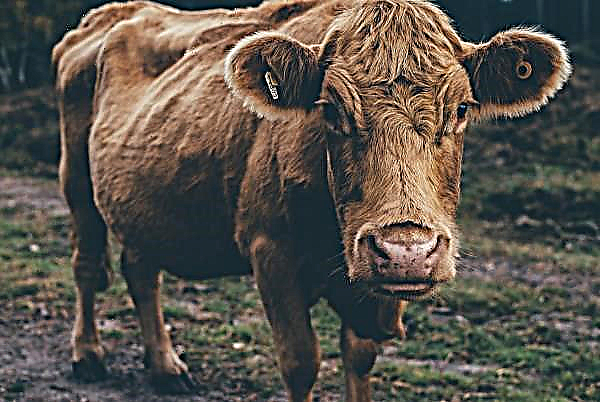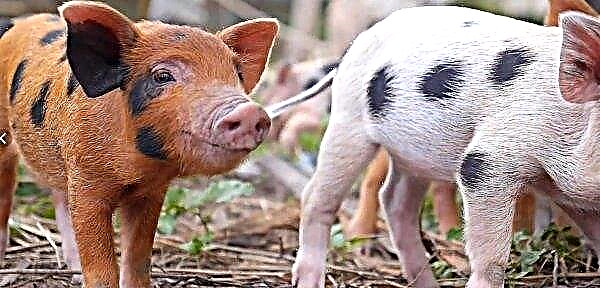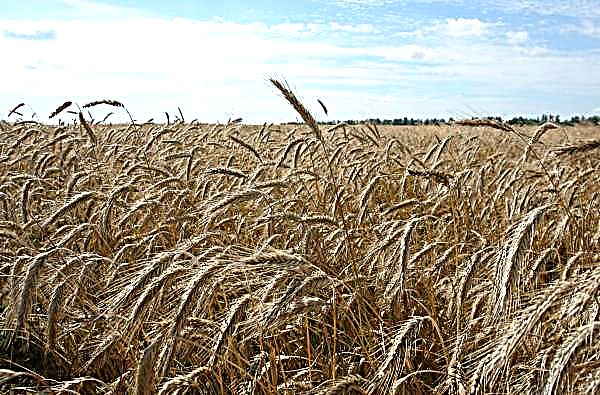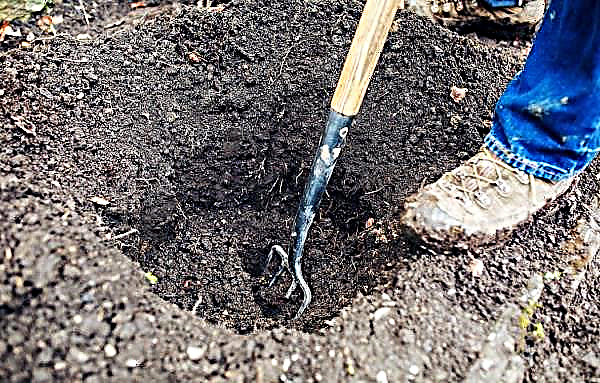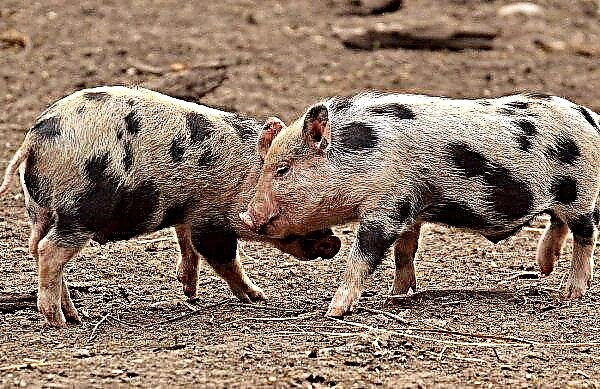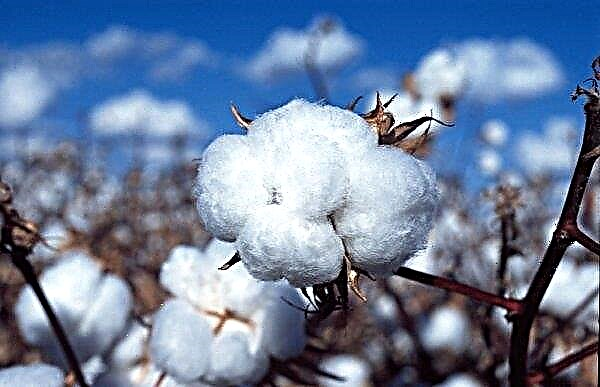Among the variety of hydrangea (hydrangea) species, you need to know which of them are frost-resistant, and which need additional shelter in the winter. The growing region also matters. This will provide the plant with the “correct” winter for spectacular flowering in spring.
Do I need to harbor hydrangea for the winter
In order to bloom luxuriantly next year, for hydrangea you need to carry out some preparation for the winter period.
Important! It is desirable to leave inflorescences, t. To. And they perform a protective function for future flower buds.
At this stage it is necessary:
- From mid-summer, finish fertilizing the plant with fertilizers, which include nitrogen.
- Gradually limit the amount of potassium-phosphorus fertilizers.
- In early autumn, stop watering the plant.
- If necessary, organize sanitary pruning - cut dried or damaged branches.
- Carry out the processing of sections with special tools.
- To shoots stiffened faster, by the end of summer you need to cut the leaves at the very bottom of the bush.
- Remove dry foliage under the bush.
- Without waiting for frosts, you should cut most of the leaves, leaving only the top ones to protect the flower buds.
- Prepare all the necessary materials.

In this prepared form, the plant remains until spring, if it belongs to species that do not require warming in the winter, or until the time of shelter, if by type of species it needs it.
Hydrangea shelter terms by region
In territories where hydrangea grows, the time of "blockage" for the winter is different. But they are always arbitrary. If the warm weather is delayed, there is no need to rush with cover. And if earlier than usual it got colder, it should, without hesitation, get to work.
Did you know? Florists are saddened by the fact that such spectacular and brightAll hydrangea flowers wilt almost instantly after cutting.
In the suburbs, shelter is being prepared at the end of October. This is the time of the first noticeable autumn frosts when the temperature does not rise at night above 0 ° С. In the southern regions, where the thermometer does not fall below -10 ° C, shelter is not required at all. You can not risk it, but make a “temporary” light shelter in advance, which will not allow the very first frosts to harm the bush.
 Residents of the Urals, which is characterized by inconsistent climate, and Siberia, where winters are especially severe, should be ready to shelter the plant in early October.
Residents of the Urals, which is characterized by inconsistent climate, and Siberia, where winters are especially severe, should be ready to shelter the plant in early October.
What hydrangeas need shelter
The genus Hydrangea has approximately 70 species. However, most of them grow in their historical homeland: in East Asia, North and South America.
The most popular “local” species are:
- large-leaved;
- panicled;
- tree-like.
 Tree hydrangea is one of the most winter-hardy species. You can not be afraid: even if the tops of the shoots freeze, this will not affect the flowering.
Tree hydrangea is one of the most winter-hardy species. You can not be afraid: even if the tops of the shoots freeze, this will not affect the flowering.
One of the features of large-leaf hydrangea is that the buds of the next year are formed during the growing season. Therefore, the plant needs a thorough shelter. The more reliable the protection, the more magnificent the flowering in spring will be. Panicled hydrangea withstands without consequences even very severe winters. Additional shelter may be needed by the root system, especially at a young age.
How to harbor hydrangea depending on the region
Creating suitable conditions for the shrub, it is necessary to take into account the species diversity, as well as the temperature characteristics of the region. A minimum of worries in autumn care is delivered to gardeners by panicled and treelike hydrangea. These frost-resistant species are not afraid of temperatures up to -35 ° C. This is explained by the fact that future buds are laid on young shoots in the spring. It is only necessary to cover plants that "live" in particularly harsh climatic zones.
The most demanding is the large-leaved species, the start date of the flowering of which directly depends on the quality of the organized winter holidays. It is precisely about him that one needs to take special care even in a moderately cold zone.
 Despite the impressive size of the bush, the branches of the hydrangea are quite flexible and easily tolerate the dowling during the shelter.
Despite the impressive size of the bush, the branches of the hydrangea are quite flexible and easily tolerate the dowling during the shelter.
You can insulate such a thermophilic plant with all sorts of improvised materials. Even those that do not allow air to pass through and are saturated with moisture are useful, because hydrangea is not afraid of boiling and is highly resistant to fungal diseases. Gardeners believe that there is no excess flooring for her.
You can prepare the defense not in stages, but immediately, but it is better to leave the ventilation holes until late autumn, until there are severe frosts. Air access should also be arranged in winter, when warming occurs.Important! Polyethylene film — an important element of protection during rains and thaws, preventing water from entering the structure.
Large leaf
In the Moscow region, protection for large-leaved varieties is prepared at the first threat of frost, since even autumn minor “minuses” can be fatal to a flower. To start, the bush must be pulled off. It’s right to do it gradually so as not to break the branches. The maximum they fall to the ground in 7-10 days. In this case, an arc is formed, under which the spruce should be put on with a roller. You can make another substrate for the bush.

A “layered cake” is formed on top of spruce branches, dry foliage, waterproof film and non-woven agrofibre. In Siberia and the Urals, this species is grown in containers, which winter in a cool, but not freezing room. The plant will not be able to winter in the open ground.
Panicled
In Central Russia and the Moscow Region there is no need to cover panicle hydrangea. The purpose of the recommended mulching is not warming, but primarily nutrition and active further development.
In the harsh conditions of the Urals and Siberia, two types of shelter are used:
- Shelter of a bush after dowling.
- Air dry.
In the first case, the shoots must be tied in small groups, bending to the ground. Make a substrate and filling for the middle of the bush from a mixture of peat, compost and dry foliage. Then comes the turn of agrofibre, designed for low temperatures. With the approach of severe frosts, the leaves are sprinkled on top, put on spruce branches, several layers of spunbond and film.
Video: panicle hydrangea shelter for the winter
In the "air" version, the plant is tied with a rope, trying not to damage the branches. At a distance of about 20 cm in a circle, they make a crate of wooden stakes or install a wire frame. You can make a cylinder of roofing material. The basal area is covered with peat mixture. Then the frame, which should be at least 10 cm higher than the bush, is filled with foliage, wood shavings, small slivers and wrapped with several layers of spunbond. The upper part is protected from moisture by a plastic film.
Tree-like
In the Moscow region, only some hybrid varieties of this species require shelter. It will be enough to mulch the soil around the trunk and wrap the bush with a non-woven fabric. It is not worth bending the shoots, it is enough to tie them to a stable support.
The most effective way for a tree-like species in Siberia and the Urals will be shelter with bending branches. A dry type of protection is possible, but differs in that the branches are not just tied, but wrapped in spanbond with simultaneous linking.Did you know? Hydrangea is a poisonous plant due to the content of cyanogenic elements, therefore it can not be eaten.

Young hydrangea seedlings
The winter hardiness of hydrangea increases with age. Regardless of the type and variety, young seedlings must be closed for the winter. This should be done in any region for the first three years of the life of the shrub, until the hardening process has passed. Complex procedures are required for the large-leaf variety. Frost-resistant species will be sufficient measures taken to compensate for temperature fluctuations and in the case of lack of snow cover, which is an excellent natural insulation.
So that they calmly endured the onset of frost, it is necessary:
- spud the near-trunk space with a dry soil mixture;
- mulch the soil with a layer of dry foliage.

How to cover hydrangea
There are many suitable shelter options. Most materials should be breathable, but artificial insulation is indispensable.
Important! Lutrasil practically does not let a drop of water pass, so it can become a “breathing” alternative to a plastic film.
For these purposes, you can use:
- sawdust;
- lapnik;
- dry leaves;
- sackcloth;
- spanbond;
- lutrasil;
- roofing material;
- rags;
- polyethylene.

For best results, it is recommended to combine the funds, taking into account the species and place of cultivation. In a snowy winter, wooden crates can come in handy, which must be covered with a layer of snow.
Leaves
Protecting the landing using only foliage is not possible. It is necessary to place a spruce branch or canvas on top. You can do the opposite - first wrap in agrofibre, then pour dry leaves, be sure to build a special frame. Chestnut and maple are sources of ideal leaves that do not have time to overtake during the winter. But the leaves of garden plants are not recommended.
Sprig branches
One lapnik for reliable shelter will not be enough. It is placed on top of another covering material. Coniferous branches should not be specially cut - the broken ones that can be found in the forest belt are quite suitable. Those that remained after sanitary pruning of domestic conifers are also suitable.

Polyethylene film
The film perfectly resists rains, however, it does not let air through either. It freely provides access to sunlight and retains heat for a long time. It is necessary to take into account the fact that with an increase in temperature the plant in such conditions can very quickly “overheat”.
Sackcloth
This material is often combined with a plastic film. You need to lay at least 2 layers. There must be small openings to provide access to fresh air, given that the burlap not only lets water in, but also absorbs it, which in the future can create unfavorable conditions for the plant.

Non-woven cover material
Spunbond or lutrasil - modern and popular shelter options among gardeners. Their main advantage is the ability to "breathe". You can choose the optimal density. For example, for large-leaved varieties in the suburbs, two layers of material with a density index of 60 will be sufficient for protection. An increase in the amount of material will allow the plant to survive safely even in snowless winters.
Rules and terms for removing cover after winter
The exact timing of the removal of the shelter can not be called. It is necessary to take into account the climatic features of the region. It could be April, or maybe mid-May. You need to wait for the stable warm weather day and night. Disclosure occurs in stages. You need to start plant liberation in the first warm days.

First, a film or spanbond is removed from the very top of the structure for a day so that the shelter dries out under the sun. However, you need to be prepared for return frosts in early spring. By mid-spring, when the buds begin to come to life, you can remove the foliage that has dried well by this time. The shrub is untied, but before inspection and pruning it is allowed to rest for several days.
Hydrangeas can be difficult to withstand adverse weather conditions. It is necessary to make some efforts to provide her with a comfortable wintering. However, the magnificent appearance of fluffy inflorescences in the spring deserves all these efforts!Did you know? In the sacred for Buddhists - Buddha’s birthday - the small hall of the temple is decorated with hydrangea.



